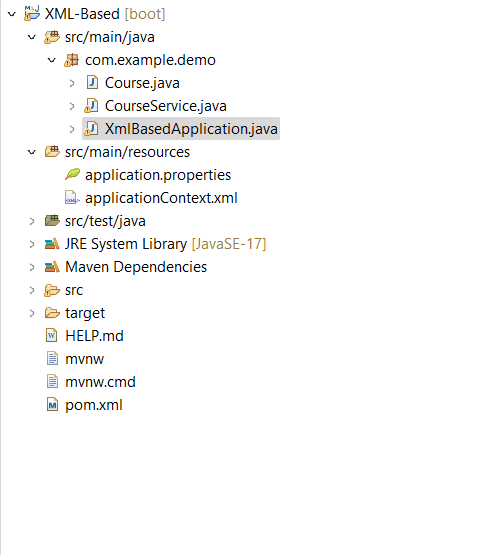
|
|
In this article, we will be exploring XML-based Injection in Spring. and also creating a sample course management system using ApplicationContext that manages the complete lifecycle of a bean from its creation to destruction in a seamless manner. XML-based injection
How Spring uses XML configuration files:
Common places for XML configuration (beans, context, web):
Step-by-Step Implementation of XML-Based Injection in SpringStep 1: Create a new Spring Project
Project Structure:Below is the structure of the Project.
Step 2: Model class [Course.java]Java
The above Course class defines the properties of a course like id, name, fees and duration. Getter and setter methods are provided to access and modify these properties. Step 3: Create a Service class to manage all courses [CourseService.java]Java
Step 4: Configuration file for Spring beans [applicationContext.xml]XML
The above XML configuration file defines Spring beans for the Course and CourseService classes, injecting the Course dependency into the CourseService bean. Step 5: Main Class to run the codeJava
Output:For better understanding refer to the below output video.
|
Reffered: https://www.geeksforgeeks.org
| Advance Java |
Type: | Geek |
Category: | Coding |
Sub Category: | Tutorial |
Uploaded by: | Admin |
Views: | 13 |

